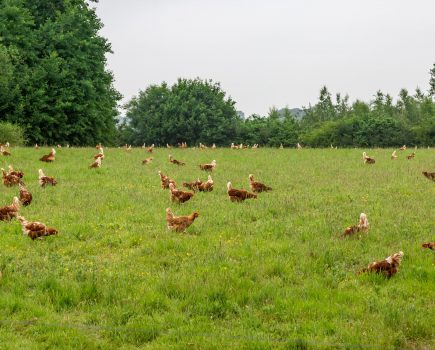Here is some practical advice to consider before you transport your chickens from one place to another. Victoria Roberts reports
Regulations for the transport of poultry came in to force in 2007 and cover containment, distance, feed and water provision and certificate of competence of the person transporting them if the poultry is part of a business or trade.
The regulations do not cover the transport of poultry:
a) if it is not for a commercial purpose;
b) to or from a veterinary practice or clinic under veterinary advice;
c) if it is a single animal accompanied by its owner or other responsible person;
d) if it is a pet accompanied by its owner on a journey;
e) by farmers transporting their own animals, in their own vehicles, less than 50km (only limited parts of the Regulation apply).
The regulations include a general requirement applying to the transport of all animals.This states that
no person should transport animals in a way likely to cause injury or undue suffering.
Download a form for non-commercial poultry transport (follow the link and click on Transport) which should be filled out, carried on the journey and kept for six months; this is in case of needing traceability in a disease outbreak.
The size of a transport box should be enough that the hen(s) can stand up, sit down and turn round. It should be airy, so a crate (commercial plastic chicken crate or dog crate) is a good, biosecure (if disinfected at every use) container. If purchasing plastic enclosed boxes, check that the ventilation is adequate, i.e. air can flow through at least two sides near the top. Litter can be newspaper or straw, shavings have a bad habit of getting all over the car from a crate. Cardboard boxes are certainly acceptable as long as they are large enough and probably only used once, the lid can be woven or tied with string to prevent escape. The best way to create a good airflow in a cardboard box (but not so large as to provide an escape route) is to cut all four corners with two parallel cuts about 5cm apart near the top and push in the centre piece (see picture). Shavings can be used in a cardboard box as they tend to stay in there.
The main hazard of transporting pet or non-commercial chickens is the insulating factor of their feathers – they cannot sweat and therefore keeping cool can be a serious problem. Transporting them in the boot of a saloon car is a hazard due to the lack of circulating air and the potential for entry of exhaust fumes. The space of an estate car gives much better welfare, but if hens are too hot or crowded they can smother each other.
Putting hens in the crate or box involves gently placing each one head first through the crate door or lid of the box: the inevitable acceleration is then in your favour.
Most hens are calm and sit quietly once the car is on the move. Covering the crate to make it dark and thus calm the birds can be hazardous if they get too hot.
If hens are fed and watered before a short journey (<50 km), food and water do not need to be included but certainly should be given on arrival.
For exhibition birds, make sure these are dry (after show preparation washing) before boxing as otherwise the feathers will stick out at bizarre angles. Space so that the large tails of cockerels do not get damaged needs to be allowed for when choosing a transport box.







